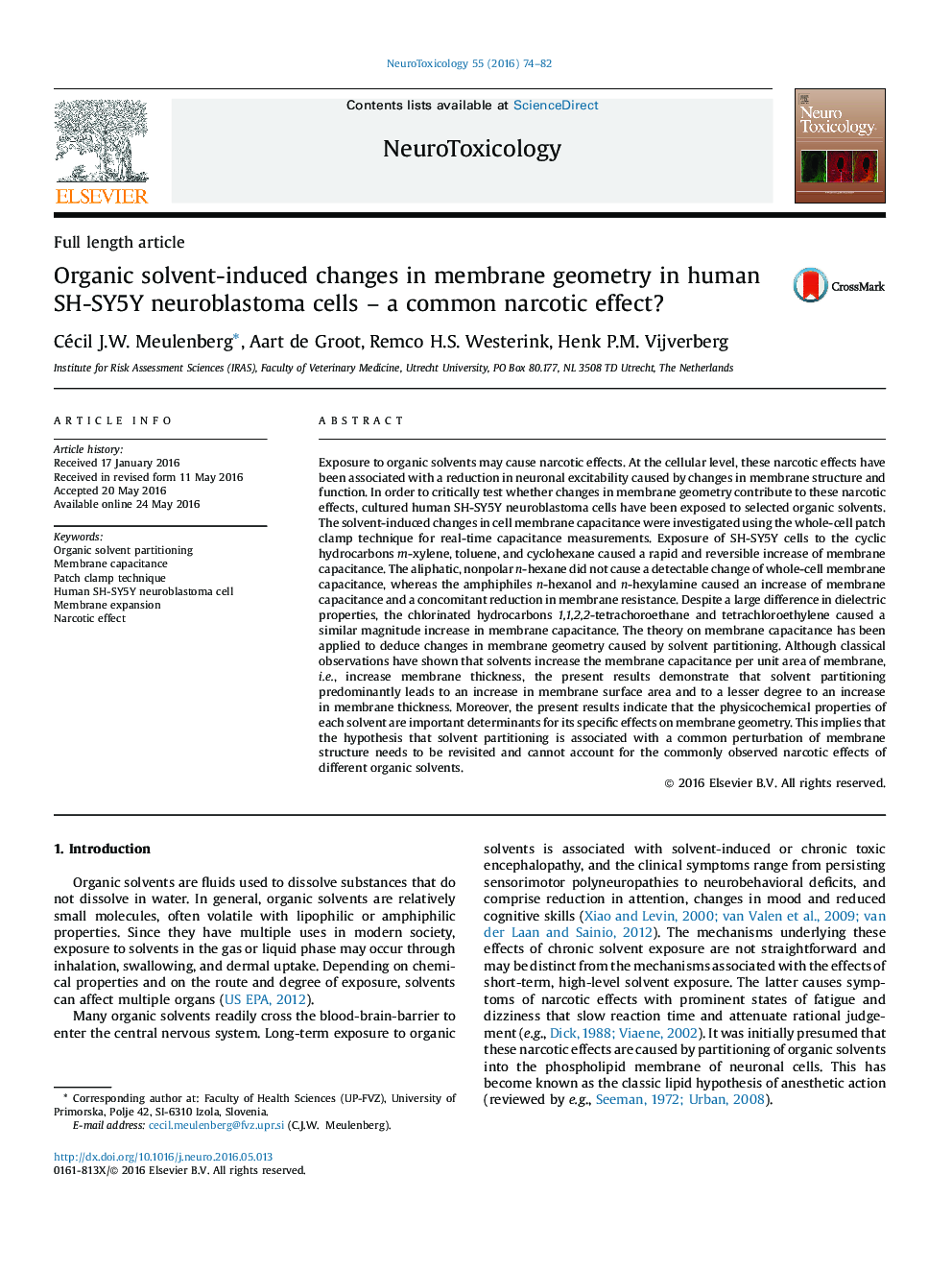| کد مقاله | کد نشریه | سال انتشار | مقاله انگلیسی | نسخه تمام متن |
|---|---|---|---|---|
| 2589445 | 1562039 | 2016 | 9 صفحه PDF | دانلود رایگان |

• Membrane effects of solvent partitioning are recorded real-time in cultured cells.
• Solvent exposure causes a rapid and reversible membrane expansion.
• Solvents increase membrane thickness to a lesser degree than surface area.
• Changes in membrane geometry appear not to account for narcotic effects of solvents.
Exposure to organic solvents may cause narcotic effects. At the cellular level, these narcotic effects have been associated with a reduction in neuronal excitability caused by changes in membrane structure and function. In order to critically test whether changes in membrane geometry contribute to these narcotic effects, cultured human SH-SY5Y neuroblastoma cells have been exposed to selected organic solvents. The solvent-induced changes in cell membrane capacitance were investigated using the whole-cell patch clamp technique for real-time capacitance measurements. Exposure of SH-SY5Y cells to the cyclic hydrocarbons m-xylene, toluene, and cyclohexane caused a rapid and reversible increase of membrane capacitance. The aliphatic, nonpolar n-hexane did not cause a detectable change of whole-cell membrane capacitance, whereas the amphiphiles n-hexanol and n-hexylamine caused an increase of membrane capacitance and a concomitant reduction in membrane resistance. Despite a large difference in dielectric properties, the chlorinated hydrocarbons 1,1,2,2-tetrachoroethane and tetrachloroethylene caused a similar magnitude increase in membrane capacitance. The theory on membrane capacitance has been applied to deduce changes in membrane geometry caused by solvent partitioning. Although classical observations have shown that solvents increase the membrane capacitance per unit area of membrane, i.e., increase membrane thickness, the present results demonstrate that solvent partitioning predominantly leads to an increase in membrane surface area and to a lesser degree to an increase in membrane thickness. Moreover, the present results indicate that the physicochemical properties of each solvent are important determinants for its specific effects on membrane geometry. This implies that the hypothesis that solvent partitioning is associated with a common perturbation of membrane structure needs to be revisited and cannot account for the commonly observed narcotic effects of different organic solvents.
Figure optionsDownload high-quality image (223 K)Download as PowerPoint slide
Journal: NeuroToxicology - Volume 55, July 2016, Pages 74–82